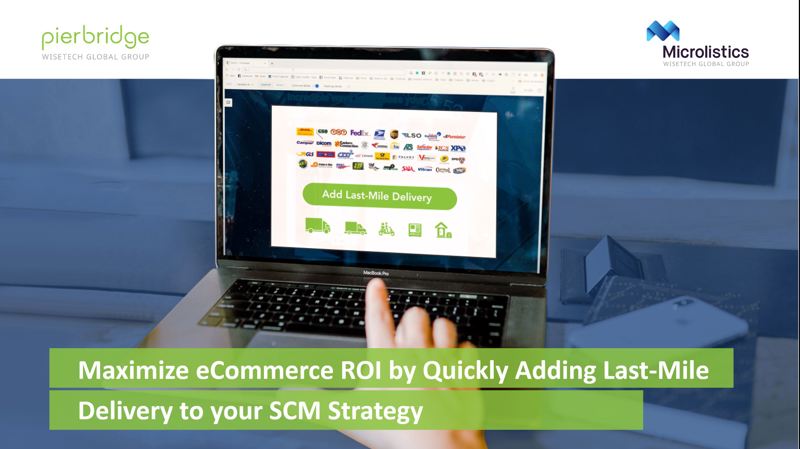In business, there’s an old saying that if you’re not first, you’re last. However, in today’s quickly evolving retail and eCommerce landscape, that adage doesn’t hold true. For shippers, manufacturers, and 3PLs, it is not too late to join the retail omnichannel logistics supply chain.
The COVID-19 pandemic accelerated customer acceptance of eCommerce and further upended the traditional retail supply chain.
eMarketer projects that retail e-commerce sales in the U.S. will grow by 13.7% to approximately $909 billion in 2021. While this won’t match year’s 18% growth that topped $709 billion, it still outpaces the pre-COVID estimates of a 12.8% increase for this year.
As pointed out in the recent Supply Chain Brain-hosted webinar “Maximize eCommerce ROI by Quickly Adding Last-Mile Delivery to Your SCM Strategy,” featuring speakers from Pierbridge and Microlistics, while caught off guard, logistics professionals did what they could to navigate the new normal.
“To keep up, retailers, manufacturers, and their supply chain partners scrambled to adjust to the new landscape often with ad hoc, piecemeal solutions that allowed them to operate as best they could during that time, said Pierbridge’s Mike Graves during the webinar. “However, now, as we emerge from the COVID-19 cloud, there is time to take a deep breath and fortify the strategy and solutions. If you haven’t addressed it already, you are not too late to enhance your eCommerce fulfillment strategy.”
One of the most significant shifts to come out of the eCommerce boom of the past year-plus has been the increased involvement of 3PLs and other service providers in the omnichannel strategy of retail. And for many, this is a different role than they are used to with B2B logistics.
“We’ve seen retailers, wholesalers, manufacturers, and others turn to 3PLs to fill their commerce and eCommerce needs at a regional level, “said Martin Hespeler of Microlistics during the webinar. “They stock inventory at local areas so that the last mile delivery needs are going to be met with the right service levels.”
But with these changes—and opportunities—come plenty of challenges for everyone involved in last-mile shipping that those that overcome will be in a position for success. Some of the challenges are:
- Retailers and eCommerce companies are facing rising costs and increasing complexity, and higher customer expectations.
- The capacity crunch is driving up costs as carriers shed less profitable shipments while also adding additional fees.
- The labor shortage is complicating things and forcing companies to look to technology to help improve productivity.
- As retailers look to respond to these pressures, they’re expanding their carrier mixture include a growing list of the regional same-day and local freight carriers, along with specialty and gig economy carriers.
“For those of you looking to implement a strategy like this or simply taking your current strategy to the next level, I’d suggest thinking of it in terms of a process and not a single event,” said Graves. “This process begins by implementing systems to put you in control for retailers and suppliers.”
To hear more about the challenges and opportunities facing today’s shippers and, as well as how Pierbridge and Microlistics can help you achieve omnichannel shipping success through technology, watch the full webinar on-demand.
